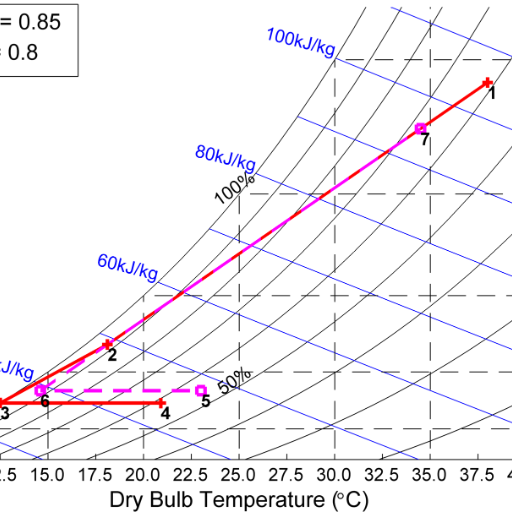Chemical Engineering GPT-AI-powered Chemical Engineering Assistant
AI-Powered Insights for Chemical Engineering
Explain the distillation process.
How do I calculate reactor size?
Difference between batch and continuous processes?
Provide an overview of thermodynamics in chemical engineering.
Related Tools
Load More
ChemistryGPT
Your go-to source for all things chemistry

Civil Engineering GPT
Civil Engineering expert

Thermodynamics (Study GPT)
Thermodynamics GPT to help study introductory Thermodynamics topics.

BioChem Research GPT
A Specialized Biochemistry and Pharmaceutical Research Assistant

Chemical Engineering Design Tutor
Specialized tutor in Chemical Engineering Design for upper division and graduate students.
Study GPT (Mechanics & Dynamics)
Mechanical Engineering GPT to help study Mechanics & Dynamics topics
20.0 / 5 (200 votes)
Introduction to Chemical Engineering GPT
Chemical Engineering GPT is a specialized version of OpenAI's ChatGPT designed to assist students and professionals in the field of chemical engineering. Its primary functions include providing detailed explanations of chemical engineering concepts, solving engineering problems, and offering guidance on best practices and standards in the industry. For example, a student struggling with the design principles of a heat exchanger network can use this GPT to understand the fundamental concepts and steps involved. Similarly, a professional working on optimizing a chemical process can seek advice on improving energy efficiency or reducing operational costs.

Main Functions of Chemical Engineering GPT
Heat Exchanger Network Analysis
Example
Analyzing a process to determine the optimal configuration of heat exchangers to maximize energy recovery.
Scenario
A chemical plant needs to reduce its energy consumption. Chemical Engineering GPT can assist in designing a heat exchanger network that minimizes utility requirements by effectively recovering heat within the process.
Economic Evaluation of Projects
Example
Estimating the capital and operational costs of a new chemical plant.
Scenario
Before starting a new project, a company needs to evaluate its feasibility. Chemical Engineering GPT can provide detailed cost estimates and economic analysis, helping in decision-making regarding project investments.
Process Optimization
Example
Improving the efficiency of a distillation column by optimizing operating conditions.
Scenario
A refinery wants to enhance the separation efficiency of its distillation unit. Chemical Engineering GPT can suggest modifications to operating conditions, such as temperature and pressure adjustments, to achieve better performance and lower energy consumption.
Ideal Users of Chemical Engineering GPT
Students
Students studying chemical engineering can use this GPT as a learning aid to better understand complex concepts, solve homework problems, and prepare for exams. It provides detailed explanations and practical examples that enhance their learning experience.
Professionals
Professionals working in the chemical engineering industry can benefit from this GPT by obtaining quick, reliable advice on process optimization, design standards, and economic evaluations. It serves as a valuable tool for solving real-world engineering challenges and improving operational efficiency.

Guidelines for Using Chemical Engineering GPT
1
Visit aichatonline.org for a free trial without login, also no need for ChatGPT Plus.
2
Familiarize yourself with the tool by reviewing available documentation and tutorials to understand its capabilities and interface.
3
Identify your specific needs, whether it's academic writing, process optimization, cost estimation, or another chemical engineering task.
4
Input detailed queries related to your task, ensuring you provide sufficient context and specifications for precise responses.
5
Review and apply the provided answers, making adjustments based on your professional judgment and project requirements.
Try other advanced and practical GPTs
BUSSINES PLAN PRO+
Empower Your Business Planning with AI

ESL Tutor Assistant
AI-powered support for ESL teachers

QBCore Script Wizard
AI-powered QBCore scripting for GTA V

Nutri Creative
AI-driven nutrition and research support

Script Spotter Agent
AI-powered product placement for scripts.

Healthcare Marketing Assistant
AI-powered healthcare email marketing.

Freqtrade Strategies Programmer
AI-Powered Trading Strategy Development.

Social Media Maven
AI-powered social media strategy tool

Readme Creator
AI-powered tool for creating professional README files.

Consistent Image Storyteller | Multiple Characters
AI-powered tool for consistent character visuals.

ESL worksheet maker
Create engaging ESL worksheets effortlessly with AI.

Web Dev Guru
AI-powered assistance for web developers

- Academic Research
- Project Planning
- Process Optimization
- Cost Estimation
- Energy Efficiency
Chemical Engineering GPT Q&A
What can Chemical Engineering GPT help me with?
Chemical Engineering GPT can assist with heat exchanger network design, process optimization, economic evaluation of projects, capital cost estimating, and more.
How does Chemical Engineering GPT improve heat exchange network scenarios?
It analyzes heat exchange networks to maximize heat recovery, optimize utility consumption, and enhance energy efficiency by evaluating process conditions and making design recommendations.
Can Chemical Engineering GPT assist in economic evaluations?
Yes, it provides detailed analysis for economic evaluations, including cost estimations, financial feasibility studies, and optimization of resources for chemical engineering projects.
How does the tool support academic research in chemical engineering?
Chemical Engineering GPT helps in academic research by offering detailed explanations, generating reports, and providing insights into complex chemical engineering principles and scenarios.
What prerequisites are needed to use Chemical Engineering GPT effectively?
A basic understanding of chemical engineering principles and familiarity with the specific requirements of your project or research task are recommended for optimal use of the tool.